DRB Nats excursion 28th August 2021
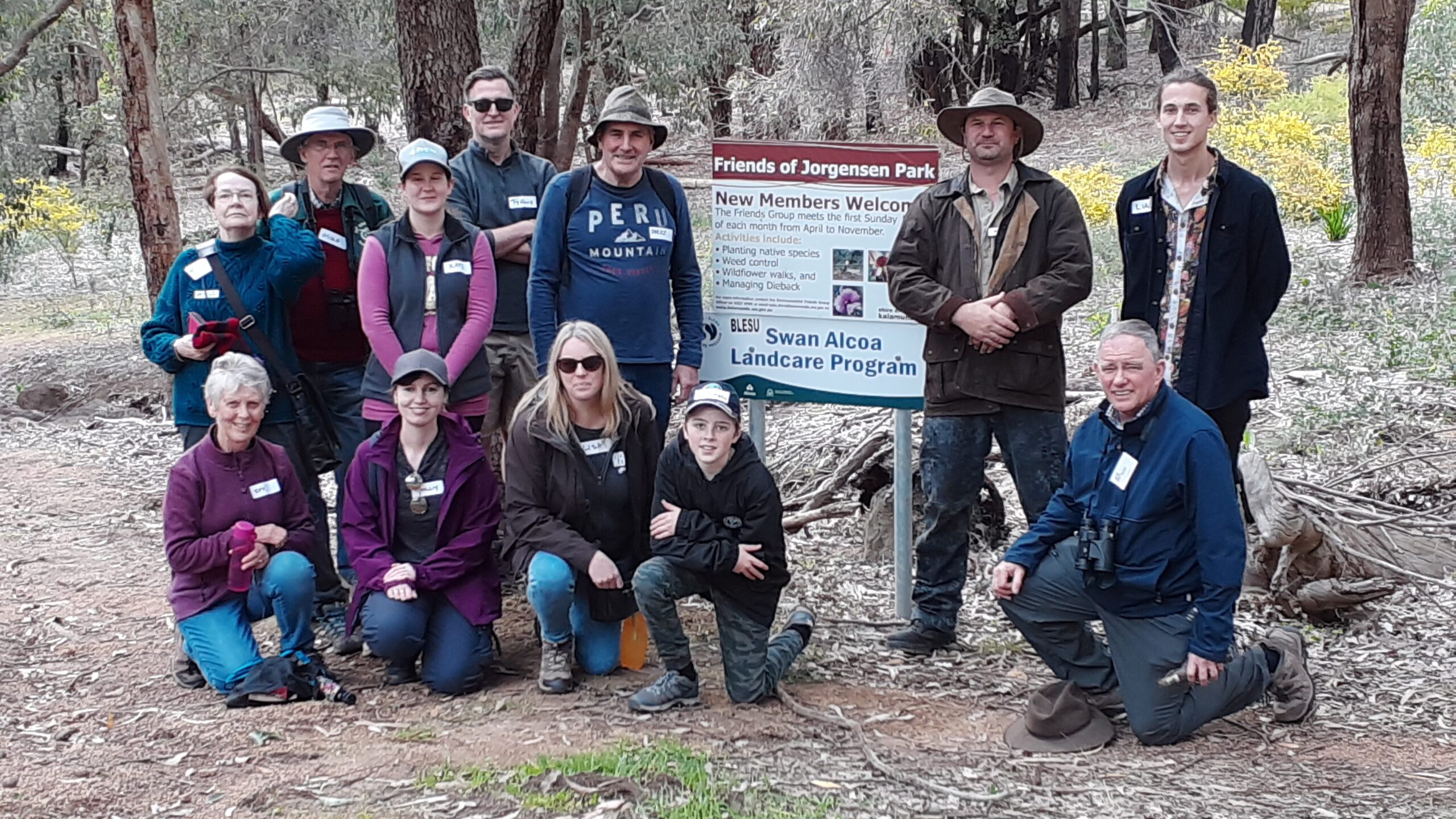
A guided tour around significant rehabilitation sites in Jorgensen Park demonstrated the very impressive results that can be achieved by a lot of hard work, high levels of local knowledge and a group of dedicated volunteers assisted by a highly experienced and passionate local government environmental officer.
On the morning of the walk, with drizzle in the air and an overwhelming workload I was hesitant about attending, but I regretted not a minute of it. A whole group of us were left in awe of the results that had been achieved.
The tour was led by Mick Davis, Chairman, WA Landcare Network and former Environmental Friends Group Officer for the City of Kalamunda with Joy McGilvray, the co-ordinator of the Jorgensen Park Friends Group. She’d started the whole project and had worked for many years, with a small team of volunteers, to turn what was previously a golf course and weed infested area into an area of increasing bushland beauty.
Mick began by showing us an area that had not been rehabilitated. It was overgrown with non-native trees, especially weed acacia trees that had fallen over and were not allowing native undergrowth to flourish. This gave us the benchmark to compare all the rehabilitation areas to.
The rehabilitation programme involved the management of the whole ecosystem. It was impressive in its comprehensiveness. It included, for example, management of the water flow, eradication of weeds and weed trees, planting of native vegetation and the provision of habitat for birds and native fauna.
Particular importance is given to the local red-tailed black cockatoos. A large water bowl, connected to the mains water supply guarantees year round water for them in the bush area. We were fortunate to see red-tails drinking from it. Mick stressed that by providing all the habitat, food and water that the red-tails need they hoped the cockatoos would breed in the area.
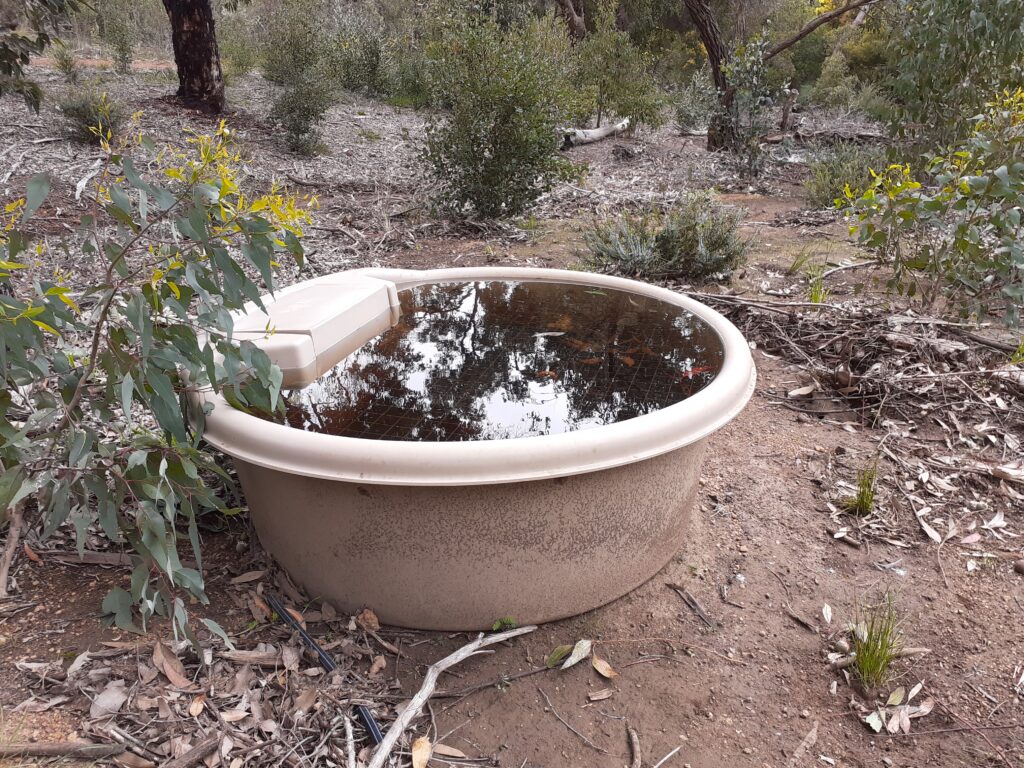
water trough for red-tailed black cockatoos 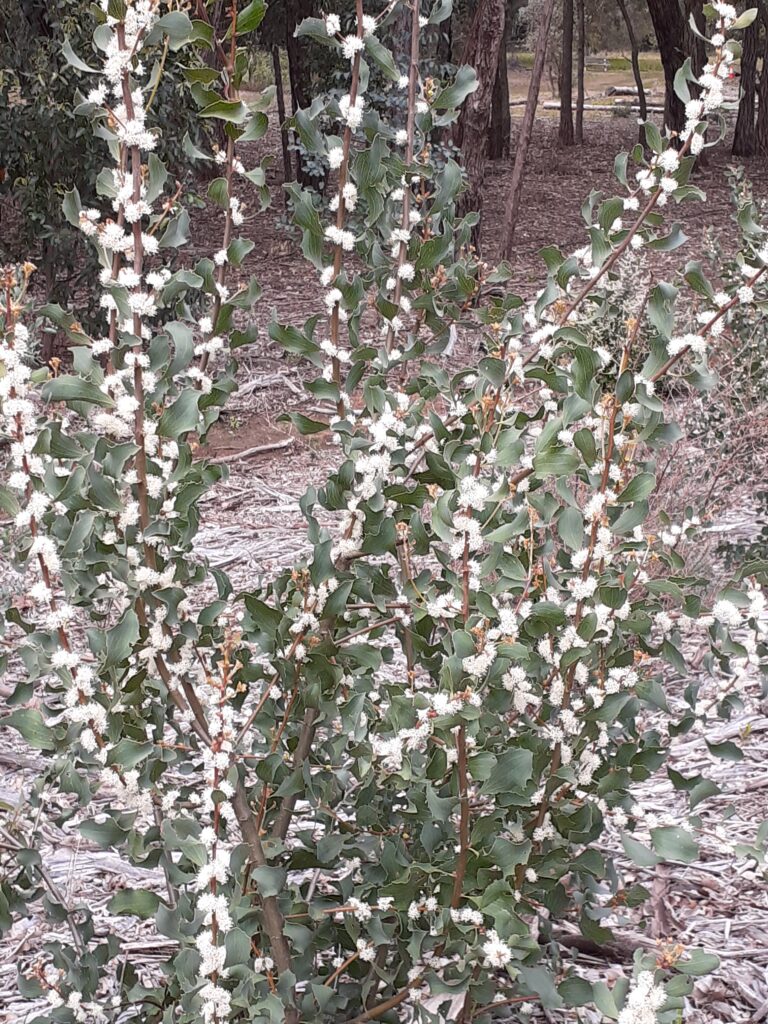
Hakea undulata in flower 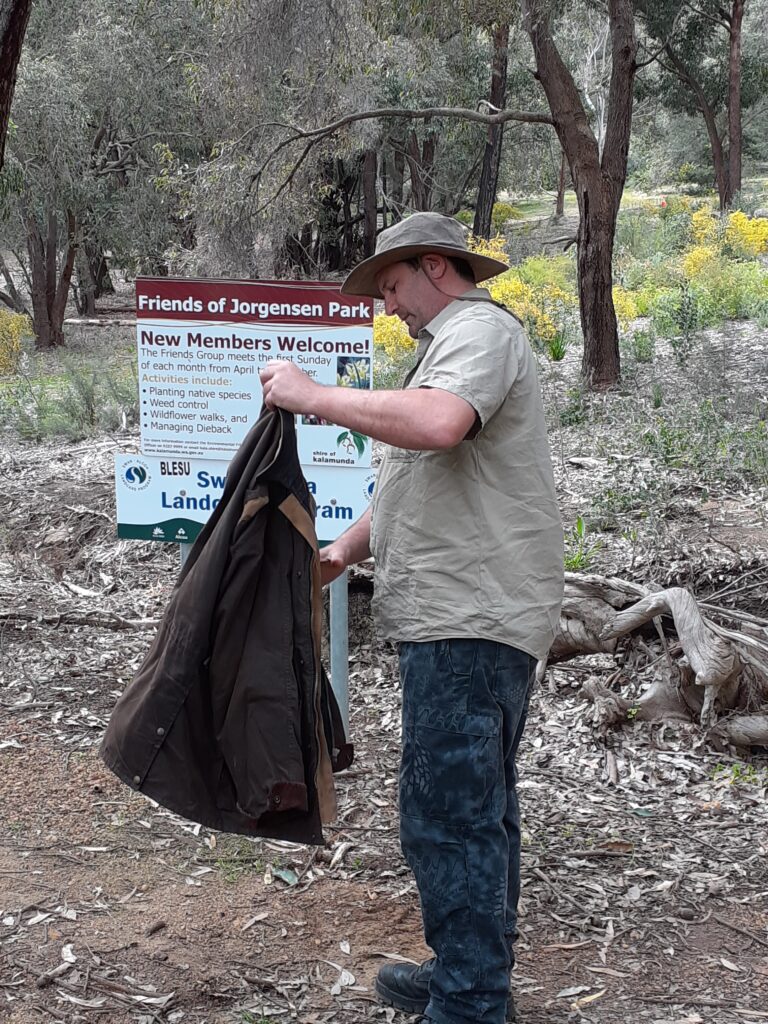
Mick Davis
with Acacia pulchella in the background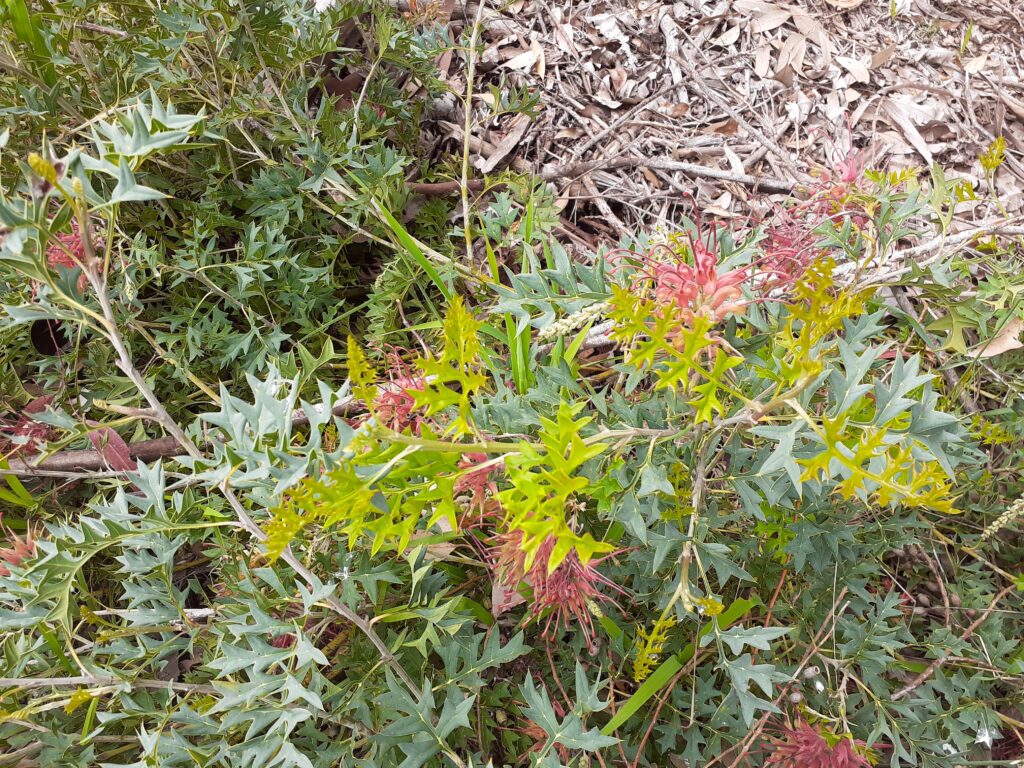
Grevillea bipinnatifida
The flowers were stunning. There was a brilliant display of Hakea undulata (Wavy-leaved Hakea). These provide food for the cockatoos. Prolific flowers were also observed on Grevillea bipinnatifida (Fuchsia Grevillea), Chorizema dicksonii (Yellow-eyed Flame Pea) and Acacia pulchella (Prickly Moses), whose bright yellow flowers shone out. Mick emphasised that the weed wattles seen elsewhere in the park are mainly tall, while most of the local wattles are small bushes. There were many more plant varieties including Hypocalymma angustifolium (White Myrtle).
I’ve barely begun to explain all we saw and learnt. Our sincere gratitude to Mick and Joy for an amazing morning and to Arlene for organising it. Please consider helping the Friends group on the first Sunday of each month, April-November: just turn up.
Rachel Green

